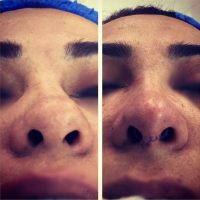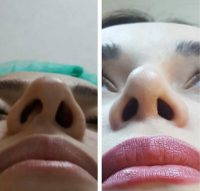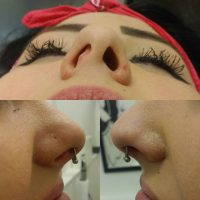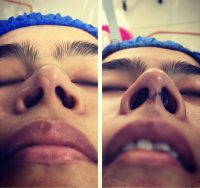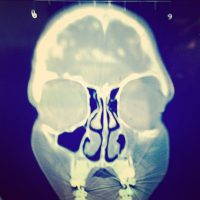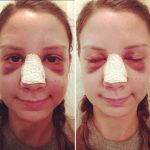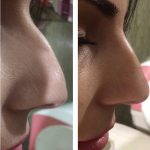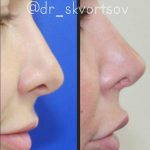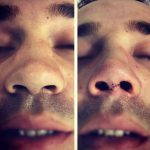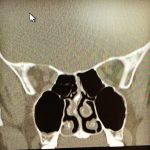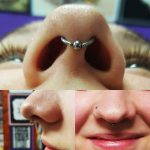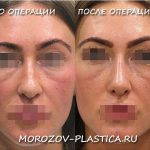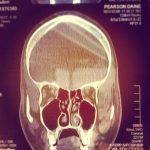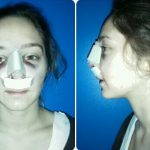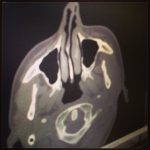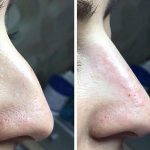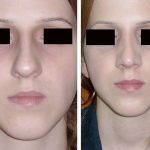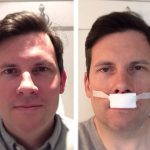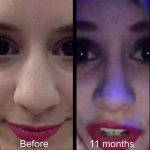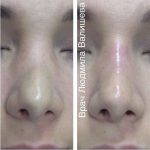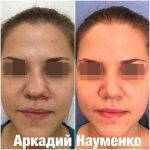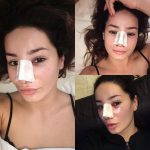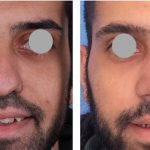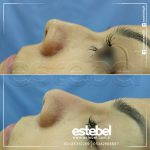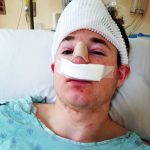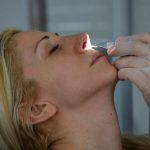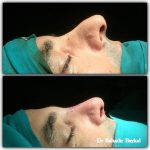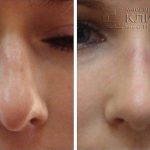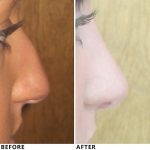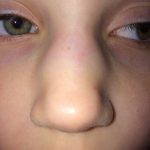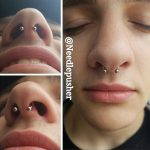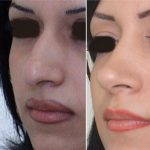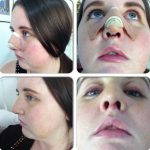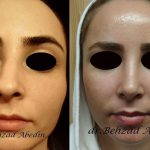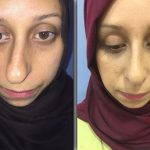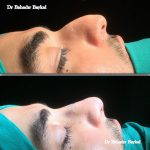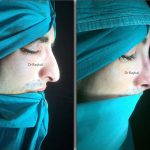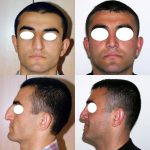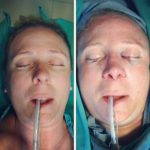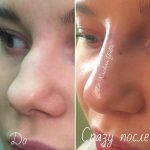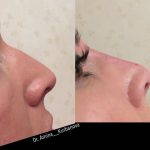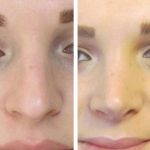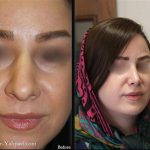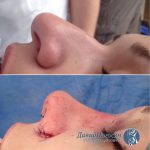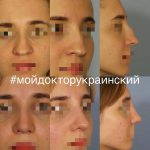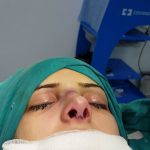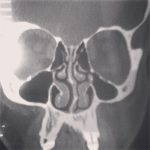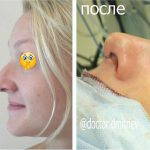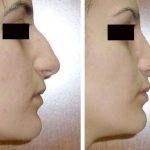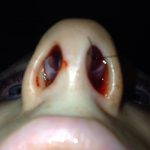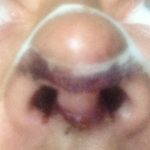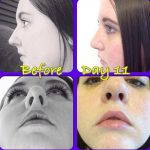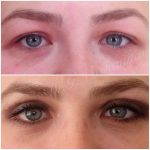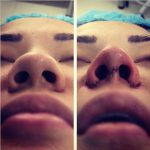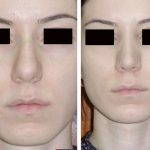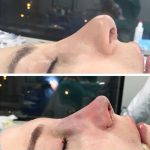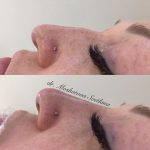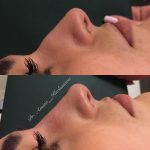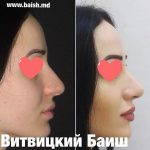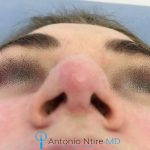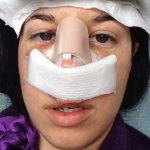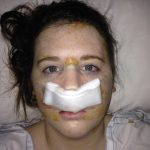Fixing a Deviated Septum
Nasal septum is a wall made up of bones and cartilage that separates the inner nasal cavity into two passage.
Thus, it plays an important role in controlling the flow of air entering the body.
When a deviated septum, due to an imbalance in the amount of the nasal passages, may have problems with breathing varying degrees of nasal congestion, and other complications, such as snoring at night, nasal bleeding, infections of the paranasal sinuses (acute and chronic sinusitis).
In addition to breathing problems are added to aesthetic problems – the visible distortion of the nose.
That, of course, annoying, but, in fact, less important than the functional problems associated with breathing.
And although, according to statistics, 80% of people have some degree of displacement of the nasal septum, the surgical intervention is necessary only for those patients in whom have a significant a deviated septum and / or difficulty breathing.
The curvature can be caused by trauma – fracture or dislocation of the nose, and can also be a consequence of a defect of the nasal septum (congenital).
The deformation of the nasal septum has various anomalies:
– displacement
– deviated
– thickening.
In acute forms of nasal congestion recommended nasal drops (no more than 5 days). In the case of rhinitis or sinusitis doctor will prescribe antibiotics.
Treatment
Fixing a deviated septum is a medical term used for operations directly related to the problems of the nasal septum.
Preparing for fixing a deviated septum
One week before surgery recommended to abandon taking aspirin or any other medicines containing aspirin, as well as non-steroidal anti-inflammatory drugs such as ibuprofen or naproxen, which can increase bleeding and lead to a prolongation of the postoperative period and eventually, – an increase in the risk of complications. On the day of surgery is not allowed to consume food and drinks. The operation lasts an average of about 60 minutes.
The purpose of this operation is the reconstruction nasal septum for extension the respiratory tract and to eliminate the causes of obstruction, including sinuses.Most patients can go home on the same day, when they fully recover from anesthesia (after a few hours after surgery). It is important that at this time close people helped to get home.
The first week after the fixing a deviated septum is necessary to use high pillows to minimize swelling and edema – a condition where fluid accumulates in the tissues, making it difficult the healing process.
It is also necessary not to remove a plaster cast and use cold packs (the best option – a bag of chilled barley) in the area of the nose and around the eyes, which will help not only to remove the swelling, but also to reduce postoperative pain.
Swelling and bruising usually disappear at the end of the first or second week after surgery, but it may take several months so that all these symptoms disappeared completely.Fixing a deviated septum is a surgical procedure that allows you to correct the deformation of the structure, which is composed of bones and cartilage, and separates the two nasal passages.
Operation description
General anesthesia and local anesthesia are used for fixing a deviated septum. Straightening and central placement the nasal septum is performed during the operation. Earlier was practiced the complete removal of the curved septum, which caused a lot of complications (sinking back of the nose, and others.).
Some doctors use this method now. However, in our clinic, preference is given to more modern methods that allow maximally preserve the the elements of a septum as a support for the external nose. Fixing a deviated septum is often performed in conjunction with rhinoplasty.Types fixing a deviated septum
The deviated nasal septum can capture only cartilage or bone sections, or each of them. The surgeon selects the most effective method of operation depending on the nature of the deviated.
Classical surgery performed by a professional surgeon is giving the correct form of the nasal septum and the central position at the maximum preservation of its tissue.
Access is performed through incisions on an internal surface of the nose. Endoscopic laser fixing a deviated septum is the newest method. It enables high precision and minimal blood loss during the correction of the nasal septum.Endoscopic fixing a deviated septum is the minimum size the incisions and the rapid healing of lesions of the nasal mucosa, and prevention of infections in it.
Indications for fixing a deviated septum
The desire of the patient to correct a cosmetic defect can be cause for surgery.
In addition, fixing a deviated septum is recommended if deformity of the nasal septum is the cause of the following problems:
- Regular nasal congestion, problems with the freedom of nasal breathing;
- Chronic rhinitis and sinusitis. If frequent inflammation of the nasal mucosa are also the cause of vasomotor (vasomotor rhinitis), then together with septoplasty is performed vasotomy – the intersection of the small vessels of the lower nasal turbinate to reduce edema and hyperemia of the mucous membrane;
- Frequent nasal bleedings.
Contraindications
- Violation of blood clotting;
- Diabetes and other endocrine diseases in the stage of decompensation;
- Chronic heart disease and blood vessels, as well as the respiratory system during an exacerbation.
The postoperative period
On the first day in the nasal cavity are volumetric tampons to prevent bleeding. Swelling of the mucous membrane is preserved within the first 10 days, gradually decreasing. Nasal breathing is completely restored in 2-2.5 weeks.On the first-second day the temperature can rise a little. In the early postoperative period should exclude heavy physical labor and intense athletic workouts.
Complications after fixing a deviated septum in the absence of concomitant diseases are rare. Sometimes there are nasal bleeding, hematoma in the area of surgery, very seldom – infections and abscess formation septum or purulent sinusitis.
The two main tasks assigned to the surgeon is full recovery and improvement in nasal breathing, as well as achieving the aesthetic shape of the nose and septum.
Deviated Septum Before And After Surgery
- You Should Also Limit Your Physical Activity For Several Weeks After Deviated Septum Surgery
- Will Fixing A Deviated Septum Straighten My Nose Images
- What Does Fixing A Deviated Septum Do
- What Are Deviated Septums Pics
- To Fix A Deviated Septum
- The Septum Can Be Deviated At Birth
- Procedure For Fixing A Deviated Septum
- Procedure Fixing A Deviated Septum Before And After
- Procedure Fixing A Deviated Septum Before And After Photos (4)
- How To Fix A Deviated Septum With Surgery
- I Have Deviated Septum Photo
- Is Fixing A Deviated Septum A Nose Job
- Is Fixing A Deviated Septum Worth It Pictures
- Is Fixing A Deviated Septum Worth It Photos
- Male Deviated Septum Surgery
- Procedure Fixing A Deviated Septum Before And After Photos (1)
- Procedure Fixing A Deviated Septum Before And After Photos (2)
- Procedure Fixing A Deviated Septum Before And After Photos (3)
- How Does Deviated Septum Surgery Work Photo
- How Common Deviated Septum
- Fixing Deviated Septum For Male Nose
- Fixing A Deviated Septum Benefits
- Fixing A Deviated Septum Is Usually Performed As An Outpatient Procedure Unless Major Complications Arise
- Fixing A Broken Nose And Deviated Septum
- Fix Deviated Septum During Rhinoplasty Picture
- Fix Deviated Septum During Rhinoplasty Before And After (4)
- Fix Deviated Septum During Rhinoplasty Before And After (3)
- Does Fixing A Deviated Septum Change The Nose Shape
- Does Fixing A Deviated Septum Change The Shape Of Your Nose Pictures
- Does Fixing A Deviated Septum Help Image
- Does Fixing A Deviated Septum Help Photos
- Ethnic Deviated Septum Surgery
- Does Fixing A Deviated Septum Straighten Your Nose Photo
- Fix Deviated Septum And Nose Job
- Fix Deviated Septum During Rhinoplasty Before And After (1)
- Fix Deviated Septum During Rhinoplasty Before And After (2)
- Does Fixing A Deviated Septum Change The Shape Of Your Nose Photo
- Does Fixing A Deviated Septum Change The Nose Shape Phot
- Deviated Septum Surgery Takes Anywhere From 30 To 90 Minutes To Complete, Depending On The Complexity Of The Condition
- Deviated Septum Preop And Postop
- Deviated Septum Quick Fix
- Deviated Septum Post Surgery
- Deviated Septum Operation
- Deviated Septum Nose
- Deviated Septum Nose Surgery Before And After (3)
- Deviated Septum Images (2)
- Deviated Septum Images (3)
- Deviated Septum Images (4)
- Deviated Septum Images (5)
- Deviated Septum Images (6)
- Deviated Septum Images (7)
- Deviated Septum Images (8)
- Deviated Septum Nose Surgery Before And After (1)
- Deviated Septum Nose Surgery Before And After (2)
- Deviated Septum Images (1)
- Deviated Septum Before And After Photos (9)
- Deviated Septum Before And After Photos (10)
- Deviated Septum Before And After Photos (8)
- Deviated Septum Before And After Photos (7)
- Deviated Septum Before And After Photos (6)
- Deviated Septum Before And After Photos (5)
- Deviated Septum Before And After Photos (4)
- Deviated Septum Before And After Photos (3)
- Deviated Septum Before And After Photos (1)
- Deviated Septum Before And After Photos (2)
- Correcting A Deviated Septum With Surgery Photos
- Can Deviated Septum Cause Sleep Problems Images
- A Deviated Septum Surgery

